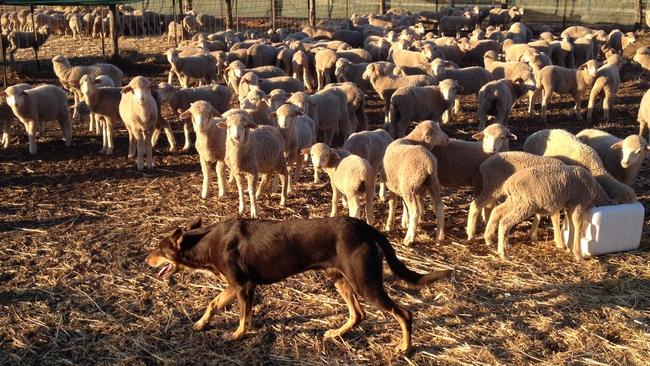Melbourne University: Lignite, or brown coal, reduces ammonia gas emissions in sheep manure
Brown coal has been maligned in environmental circles, but new research shows it may have a place in greening the farm.
University of Melbourne research has found ammonia gas released from sheep and cattle manure can be reduced through application of lignite, commonly known as brown coal.
Ammonia — while not directly considered a greenhouse gas — is a major source of air pollution and soil acidification.
But in some circumstances, it can be converted to nitrous oxide, a greenhouse gas about 300 times more dangerous than carbon dioxide.

Ironically, brown coal is considered a greenhouse gas emitter if burnt for power generation.
But as University of Melbourne PhD scholar Hassan Khanaki has found, in a physical form, lignite can be an environmentally friendly and low-cost method of reducing ruminant manure gas emissions.
Mr Khanaki said that scientists had known that up to 80 per cent of nitrogen in livestock feed was used by sheep and cattle and excreted as manure, mostly from urine.
“When the manure forms, ammonia gas is emitted from livestock manure, which contributes to a major source of air pollution, waterways eutrophication and soil acidification,” he said.
“The ammonia can react with several kinds of atmospheric acids to form ammonium particulate matter, which affects human breathing.”
Mr Khanaki is part of the research team overseen by Dr Paul Cheng.
Dr Cheng’s team has found lignite can result in significant reductions in the release of polluting gases from ruminant waste.
Mr Khanaki said his laboratory research had shown lignite, spread as a powder on top of sheep manure, could cut ammonia gas emissions by 80 per cent when compared with a control sample.
“This is also especially so on cattle manure, because it is more of a slurry,” he said.
“The more a slurry, the more ammonia is produced.”
Mr Khanaki’s research uncovered the reason why lignite was able to reduce ammonia emitted into the atmosphere.
He said ammonia was emitted into the atmosphere when the pH was higher than 7.
But the low pH — 3.69 — and high buffering capacity of lignite can contribute to alter the ratio of ammonium/ammonia to ammonium — which is not volatile — leading to a reduction in ammonia emissions.
Mr Khanaki said lignite could be used in feedlots or sheds where livestock manure was clustered, but this was not common industry practice.
He said it was unclear whether additives to ruminant manure would have a negative effect on pasture growth or affect livestock grazing.




